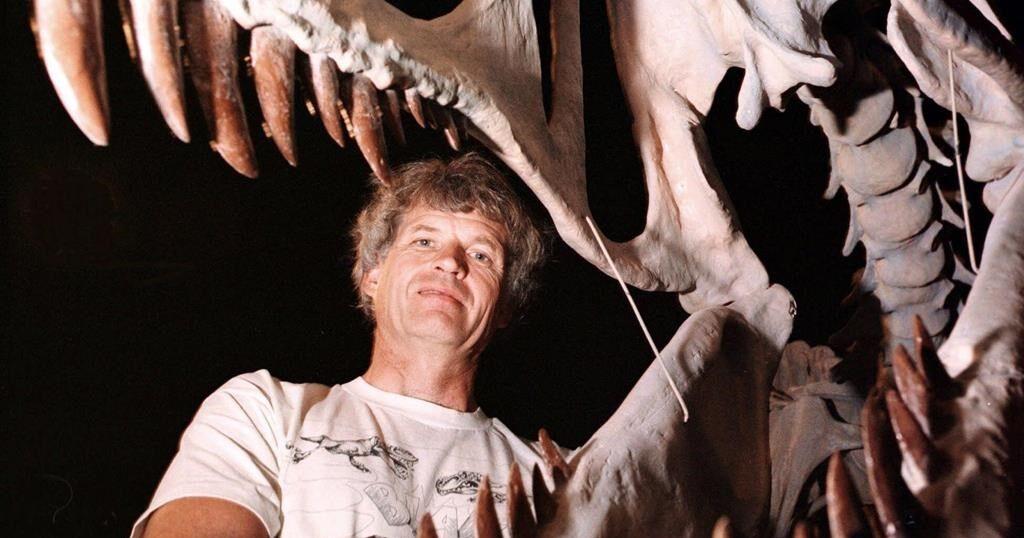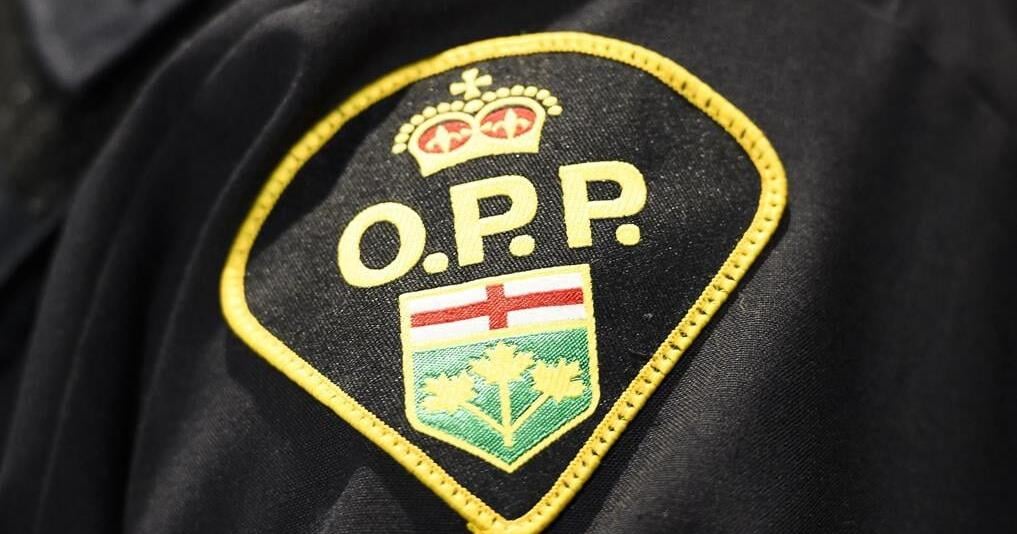EDMONTON – Canada’s famed dinosaur hunter and one of the inspirations for the “Jurassic Park” phenomenon turned 75 earlier this year and has no plans to drop his chisel and rock hammer.
Philip Currie says he’ll keep digging until he’s one with the fossils he has spent his life unearthing.
“I decided when I was about 40 or 50 that I was going to continue until, suddenly one day in the (Alberta) Badlands, I would go poof and I’d be gone,” Currie said in an interview ahead of the museum that’s named after him celebrating its 10th anniversary.
And he says before he does go, he hopes to find an intact specimen in Alberta of his favourite dinosaur — Troodon formosus.
It’s a brainy, big-eyed dinosaur that resembles the nasty, two-legged, big-tailed and sharp-toothed velociraptor made famous in the “Jurassic Park” movie series.
“(It) was probably the most intelligent dinosaur we know,” said Currie.
“It’s got the biggest brain. It has eyes that face forward in a way that gave it binocular vision. And now we know they were feathered.”
In other parts of the world, teeth of a similar dinosaur have been found with serrations as big as those of a T. Rex’s tooth.
“We still haven’t got a complete specimen (of the Troodon formosus) anywhere in the Western North America. It’s crazy,” he said.
“I would love to see them just to learn from it and see what we got right and what we got wrong.”
The Troodon can be seen in a death pose in the logo of a museum named after Currie in Wembley in northern Alberta.
The Philip J. Currie Dinosaur Museum is marking its 10-year anniversary next year by exhibiting its recent and largest discovery in northern Alberta so far — the skull of a pachyrhinosaurous. The skull alone is the size of a baby elephant.
The Wembley centre is among several museums Currie has helped build in Canada and around the world, including China and Japan, as dinosaur research boomed over the course of his career.
It began when he was a 12-year-old growing up in Ontario, reading the Roy Chapman Andrews book “All About Dinosaurs” and dashing through the Royal Ontario Museum, looking at all the dinosaur displays, confident he would one day hunt some of his own.
Most of the fossils were from Alberta, so he moved there to work.
He says the province is home to the Dinosaur Provincial Park, east of Calgary, where 50 species of dinosaurs and 150 species of turtles, crocodiles, lizards, snakes, flying reptiles, mammals and fish lived together.
“That makes it one of the best sandboxes or playgrounds for somebody like me,” he said with a laugh.
On his first day out in the field, around 1976, he uncovered his first fossil: a spine. “I was holding in my hands dinosaur bones — this evidence of ancient life.”
He worked at the Royal Tyrrell Museum of Palaeontology in Drumheller, but his expertise has taken him to dinosaur bonebeds all over the world, including regularly to Mongolia and China, along with the University of Alberta in Edmonton, where he teaches.
While his subjects were long gone millions of years ago, the science of digging them up has ebbed and flowed for about a century.
In the 1920s, some of the world’s first paleontologists, including Andrews, had already completed expeditions to China’s Gobi Desert, despite the warlords that ruled the area, and unearthed some of the largest dinosaur fossils seen at the time.
But until the 1970s, Currie said, the Great Depression and world wars halted further discoveries. It was further hampered by the erroneous belief there were few dinosaurs left to be found.
From the 1960s through the ’80s, paleontology grew a bit, aided by advances in technology, but remained in the shadows of popular science.
In 1993, Hollywood changed that.
Director Steven Spielberg released “Jurassic Park.” Based on the book by Michael Crichton, it told a story of paleontologists pursuing — and being pursued by — dinosaurs brought back to life.
While developing his lead character, Alan Grant, Crichton was inspired by the few paleontologists working at the time, including Currie. Crichton has acknowledged it was Currie’s research method that piqued his interest.
Currie said the book and movies have shown the world paleontology is “multidisciplinary” and that bones tell stories of not only what lived but how it lived.
Paleontologists, in turn, were viewed less as diggers and more like detectives.
“You’re, first of all, digging (evidence) up. Then you’re trying to figure out what is it or who is the victim, why did they die, why are they being found in this particular way, and what can we learn from this,” he said.
“Every time you answer one question, you end up with two more questions.”
He said the hours he has spent digging and brushing dirt off fossils in Alberta and all around the world have humbled and matured him.
“When you’re looking at dinosaurs, you look for evidence for why they became extinct,” he said.
“If dinosaurs hadn’t become extinct, what would we look like now? Even though I’m not religious, I think about these things on a bigger scale.
“It’s not just an asteroid hitting the world 65 million years ago. There is something else going on.
“Our story is incomplete.”
This report by The Canadian Press was first published Oct. 13, 2024.





